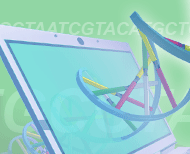 |
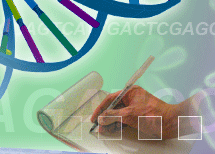 |
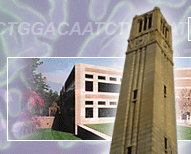 |
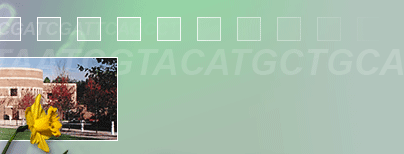 |
|
||||||
Confirmed Speakers
A. Malcolm Campbell, Ph.D. Dr. A. Malcolm Campbell teaches introductory biology, molecular biology, genomics, and synthetic biology at Davidson College in North Carolina. In 1992, he obtained his Ph.D. from Johns Hopkins University and was a Pew Teacher-Scholar Postdoctoral Fellow (92 - 94) at Washington University and Macalester College. In collaboration with his students, he conducts pedagogical and basic research in synthetic biology and DNA microarray methodology. He has conducted educational workshops at national meetings (e.g., American Society for Cell Biology, Association of Biology Laboratory Educators, Project Kaleidoscope, National Association of Biology Teachers, and the National Research Council), and has written a booklet entitled "How to Get a Teaching Job at a Primarily Undergraduate Institution". 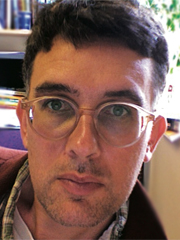
Vincent J. Carey, Ph.D. Vince Carey is Associate Professor of Medicine (Biostatistics) at Harvard Medical School. He is also a summer instructor at Cold Spring Harbor Laboratory, leading the programming components of the course "Integrative statistical analysis of genome scale data" annually since 2005. As a co-founder of the Bioconductor project (http://www.bioconductor.org), he has provided software tools for structuring and analyzing microarray data and has edited and contributed to two monographs on the project. He has given invited courses on statistical analysis of microarrays in Denmark, France, Brazil, Korea, emphasizing the use of transparent statistical computing methods and formally reproducible methods of analysis. 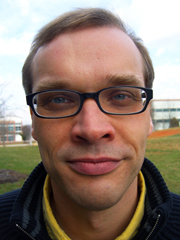
Steffen Heber, Ph.D. Steffen Heber is assistant professor in computer science at NC State University, with a joint appointment in the Department of Computer Science and the Bioinformatics Research Center. His research interests are Bioinformatics and Computational Biology. Currently, he is working on stress induced alternative splicing changes in Arabidopsis thaliana, on the analysis and quality assessment of deep sequencing and microarray experiments, on the design of algorithms for conserved gene orders, and on developing educational animations for Bioinformatics Education. Previously, Steffen was post doc at University of California, San Diego with Pavel Pevzner. He did his PhD thesis about Algorithms for Physical Mapping in the German Cancer Research Center (DKFZ) under the supervision of Martin Vingron and Joerg Hoheisel. 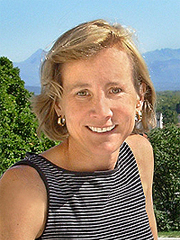
Cheryl A. Kerfeld, M.A., Ph.D. Cheryl A. Kerfeld is the director of the Department of Energy Joint Genome Institute's Education Program which aims to help integrate genomics and bioinformatics research with the undergraduate curriculum. She is also involved in organizing and teaching the ASM-JGI Bioinformatics Institutes which focus on training college and university faculty in bioinformatics. Kerfeld completed her undergraduate degree at the University of Minnesota, majoring in Biology and English. Subsequently, while working as a research technician in the Department of Microbiology at the University of Minnesota, she completed a Master's degree in English Literature through the Regent's Scholarship program. She obtained her PhD in Biology from UCLA. In addition to her efforts to blend research with education, Kerfeld is a structural biologist with research interests in photosynthesis, photoprotection and bacterial microcompartments. She is Head of the Structural Genomics Program at the Joint Genome Institute and is also an adjunct professor in the Department of Plant and Microbial Biology at the University of California, Berkeley. She has co-produced public artworks and published widely in journals from Leonardo to Science. 
Tom Miller, Ph.D. Thomas Kenan (Tom) Miller III received the BA degree in Mathematics and Chemistry from the University of North Carolina at Chapel Hill in 1976. He received the MS degree in Biomedical Engineering and Mathematics in 1980, and the PhD in 1982, both from UNC-Chapel Hill. Since 1982 he has been with the Department of Electrical and Computer Engineering at North Carolina State University, where he holds the rank of Professor of Electrical and Computer Engineering and Associate Dean in the College of Engineering. He is currently serving as Vice Provost for Distance Education and Learning Technology Applications (DELTA). In his role as Vice Provost, Dr. Miller is responsible for strategy, deployment, and implementation of the universityís technologies for teaching and learning and distance education programs. In July of 2008, Dr. Miller was named Executive Director of the NC State University Entrepreneurship Initiative. In this role he is leading a campus-wide effort to empower students as entrepreneurial thinkers, leaders and doers. Dr. Miller has taught courses in computer architecture, microprocessor systems design, and C and C++ software design. He is the author or co-author of more than 50 technical publications in areas including engineering education, distance education technologies, medical instrumentation, computer architecture, neural networks, communications, and signal processing. He was instrumental in architecting the College of Engineering's Eos computing environment, which consists of a centrally managed network of more than 1,000 distributed workstations in academic and research labs throughout the college and serves as the architectural foundation of NC Stateís Unity system. He instituted and directs the NC State University Engineering Entrepreneurs Program. He is a member of the Academy of Outstanding Teachers at North Carolina State University, and recipient of the 1996 Joseph M. Biedenbach Outstanding Engineering Educator award from the IEEE ìfor innovative teaching methods and for empowering students as entrepreneurs.î He was named ìTar Heel of the Weekî in January, 2000, for his work with engineering student entrepreneurs. He also co-founded and served as president of X Engineering Software Systems Corporation, developer of first native X-Window spreadsheet. 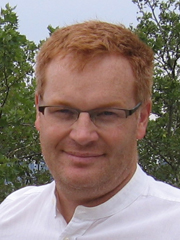
Bruce Nash, Ph.D. Co-Principal Investigator Bruce Nash received his Ph.D. in molecular genetics from the University of Toronto, where he studied the guidance of neuronal growth cones and cell migrations in C. elegans, followed by a postdoctoral fellowship in molecular biology at the University of Oregon, where he studied cell division. As Assistant Director for Science at the Dolan DNA Learning Center (DNALC), Dr. Nash is responsible for developing new curriculum and overseeing the DNALC's educator training programs, including courses on RNA interference, cancer biology, plant genomics, and bioinformatics. 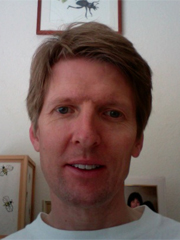
Leif Saul, Ph.D. Leif Saul received his Ph.D. in Zoology from the University of California at Berkeley, studying agonistic behavior in salticid spiders. He subsequently taught a variety of subjects at UC Berkeley, Pomona College, Trinity College (CT), the University of Connecticut, Eastern Connecticut State University, and Front Range Community College. He now teaches human anatomy and physiology at the University of Colorado at Boulder. Dr. Saul began drawing cartoon handouts for his teaching as a graduate student, and later began creating animations on the Web for his lectures in Connecticut. He worked for CleverMedia as a Flash programmer/designer creating online games in 2000-2001. Since that time, alongside his teaching he has been doing Web design, Flash programming, and illustrations for educational purposes, both in his teaching position and on a freelance basis. His Biology In Motion project features interactive animations for teaching physiology and evolution. |